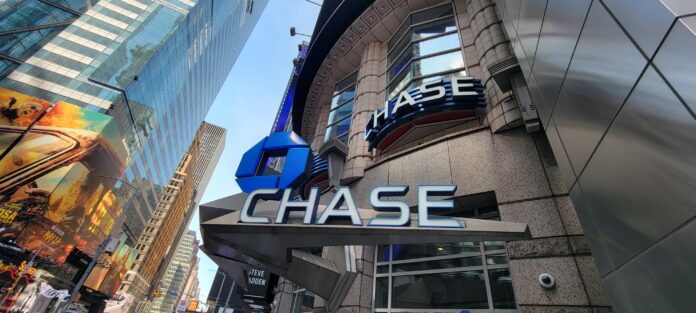Chase Bank, officially known as JPMorgan Chase & Co., is one of the largest and most prominent financial institutions in the world. Headquartered in New York City, Chase Bank offers a wide array of financial services, including retail banking, investment banking, asset management, and private wealth management.
As of 2024, Chase Bank (officially JPMorgan Chase & Co.) holds the top position in the list of the largest banks in the United States. Here’s a quick overview of the top five banks in the U.S. by total assets:
- JPMorgan Chase & Co. (Chase Bank): As the largest bank in the U.S., JPMorgan Chase leads with the highest total assets, providing a comprehensive range of financial services including retail, investment, and private banking.
- Bank of America: Ranking second, Bank of America is a major player in the U.S. banking industry, offering extensive retail banking services, as well as investment and wealth management solutions.
- Citigroup Inc.: Citigroup, often referred to as Citi, occupies the third spot. It provides a broad spectrum of financial services globally, including consumer banking, investment banking, and corporate finance.
- Wells Fargo & Co.: Wells Fargo is fourth in the ranking and is known for its extensive branch network and diverse financial services ranging from retail banking to investment management.
- Goldman Sachs Group Inc.: Goldman Sachs, while primarily known for investment banking, is fifth in the list of largest U.S. banks by assets. It also offers investment management and other financial services.
Interesting Facts About Chase Bank
- Historical Roots: Chase Bank, formally known as JPMorgan Chase & Co., traces its origins back to 1799. It was originally founded as The Manhattan Company by Aaron Burr, a founding father and former Vice President of the United States. The company started as a water supply company but soon expanded into banking.
- Merger of Giants: Chase Bank as it is known today is the result of several high-profile mergers. Notably, it merged with J.P. Morgan & Co. in 2000, creating one of the largest financial institutions in the world. The merger combined Chase’s retail banking with J.P. Morgan’s investment banking prowess.
- Global Reach: Chase Bank operates in over 100 countries worldwide, serving millions of customers and businesses. It is a major player in global finance, providing services ranging from personal banking to corporate investment solutions.
- Financial Powerhouse: As of 2024, JPMorgan Chase is the largest bank in the United States by assets and one of the largest in the world. It holds significant influence in global financial markets and is a key player in investment banking, asset management, and retail banking.
- 2008 Financial Crisis: During the 2008 financial crisis, JPMorgan Chase played a significant role in stabilizing the financial sector. It acquired Bear Stearns and Washington Mutual, two major financial institutions that faced severe distress. These acquisitions helped prevent a deeper crisis but also put Chase in the spotlight for its increased market dominance.
- 2014 Data Breach: In 2014, Chase Bank suffered a significant data breach affecting approximately 76 million households and 7 million small businesses. The breach exposed sensitive information such as names, addresses, phone numbers, and email addresses. Chase took steps to enhance its cybersecurity measures in response to the breach.
- 2019 $5 Billion Settlement: In 2019, JPMorgan Chase agreed to a $5 billion settlement with the U.S. Department of Justice over allegations related to its role in the 2008 mortgage crisis. The settlement was part of a broader effort to address misconduct related to mortgage-backed securities.
- 2020 Trading Losses: In 2020, JPMorgan Chase reported substantial trading losses due to a strategy involving complex derivatives. These losses were linked to market volatility caused by the COVID-19 pandemic. Despite these challenges, the bank continued to perform well overall, demonstrating its resilience.
- Consumer Class Action Lawsuit: In 2021, Chase Bank faced a class action lawsuit accusing it of charging excessive fees on certain checking and savings accounts. The lawsuit alleged that the bank had imposed hidden fees and failed to disclose important account terms, leading to financial harm for customers.
- Environmental Concerns: Chase has faced criticism from environmental activists for its financing of fossil fuel projects. Various organizations have called for the bank to align its investment strategies with climate goals and reduce its support for environmentally damaging industries.
- 2021 CEO Scandal: In 2021, JPMorgan Chase CEO Jamie Dimon faced scrutiny over remarks made about China. His comments, which were perceived as insensitive, led to diplomatic tensions and criticism. Dimon later apologized for his remarks, and the incident highlighted the challenges faced by high-profile executives in managing public relations.
- 2009 Financial Regulatory Issues: In 2009, Chase faced regulatory scrutiny for its business practices, including accusations of manipulating interest rates and engaging in risky lending practices. The bank agreed to several settlements with regulators to address these issues.
- COVID-19 Relief Programs: During the COVID-19 pandemic, Chase Bank played a crucial role in providing relief to businesses and individuals affected by the crisis. The bank administered Paycheck Protection Program (PPP) loans and other financial assistance to support economic recovery.
- 2022 Compliance Issues: In 2022, Chase Bank faced investigations related to compliance with anti-money laundering regulations. The bank was accused of failing to adequately monitor and report suspicious transactions. This investigation led to increased scrutiny of its compliance practices and efforts to enhance its anti-money laundering controls.
